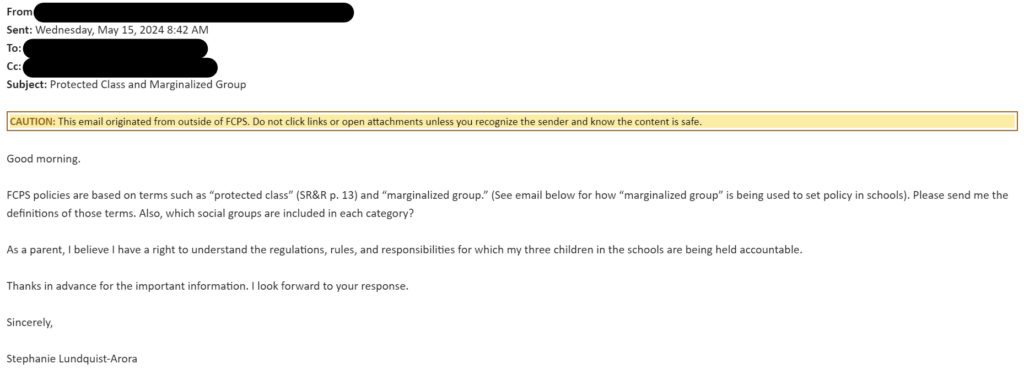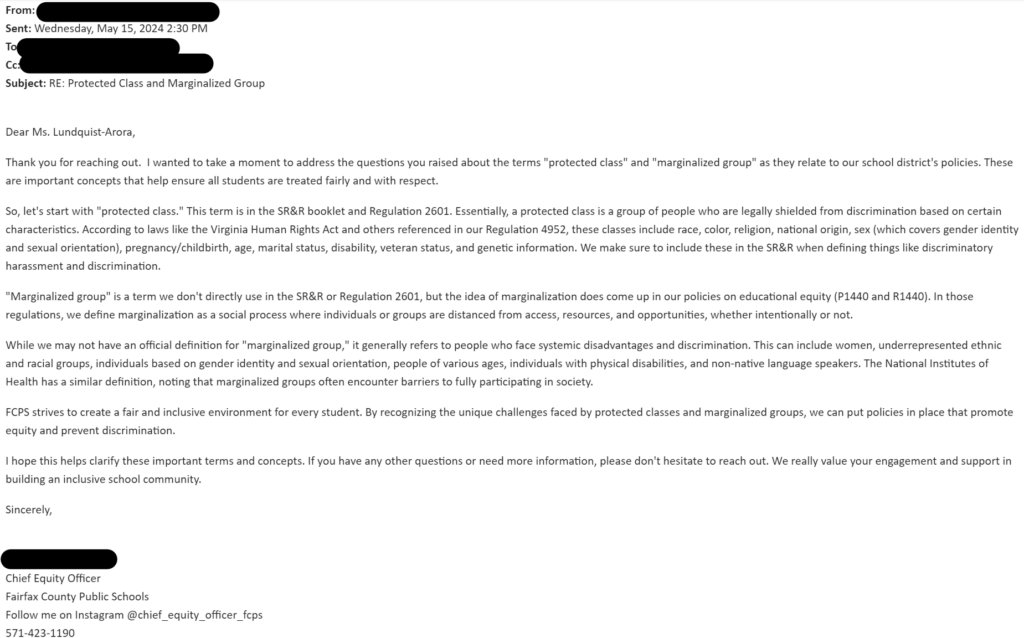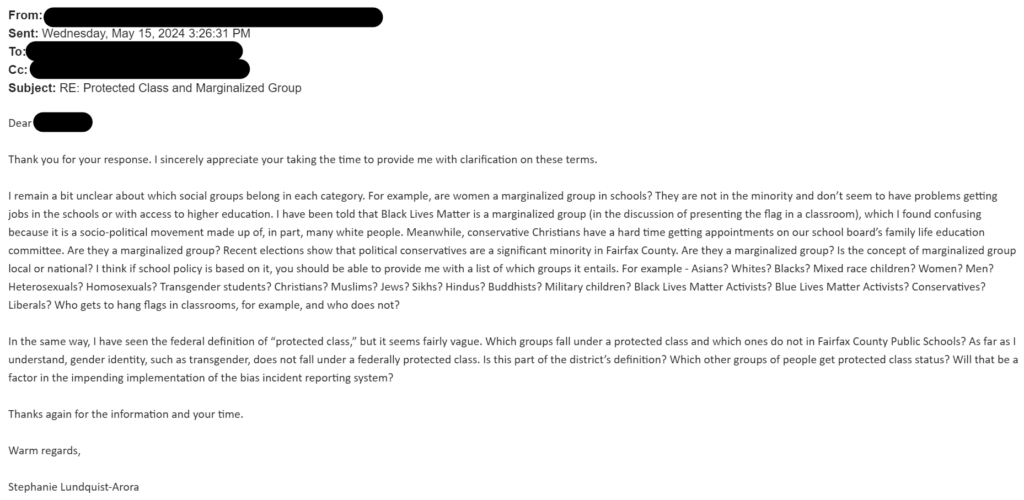
Fairfax County Public Schools uses vague terms such as “marginalized group” and “protected class” to promote the interests of some students more than others
Incidents
On May 17, 2024, parental rights advocate Stephanie Lundquist-Arora reported how Fairfax County Public Schools is using terms such as “marginalized group” and “protected class” to “hold some students’ interests, access to resources, and safety above others.” The district has an equity policy that was adopted in June 2023 that explained an example of equity was “explicit opportunities for engagement of marginalized students in school and division decision-making.”
Parents Defending Education received multiple emails from Stephanie Lundquist-Arora that were from district administrators regarding this issue. On January 19, 2022, the principal of Irving Middle School within the district stated in an email that flags promoting the Black Lives Matter movement and LGBTQ issues are allowed due to supporting “marginalized groups”: “Regarding the BLM and Pride flags, FCPS does allow stickers/signs/posters, etc. that express support for traditionally marginalized groups which does include Black Lives Matter and Pride Flags.”
In an email dated May 15, 2024, Stephanie Lundquist-Arora asked the district’s chief equity officer for definitions of the terms “protected class” and “marginalized group” as well as “which social groups are included in each category.” The chief equity officer then provided the following definition for “protected class”:
Essentially, a protected class is a group of people who are legally shielded from discrimination based on certain characteristics. According to laws like the Virginia Human Rights Act and others referenced in our Regulation 4952, these classes include race, color, religion, national origin, sex (which covers gender identity and sexual orientation), pregnancy/childbirth, age, marital status, disability, veteran status, and genetic information. We make sure to include these in the SR&R when defining things like discriminatory harassment and discrimination.
The following definition is then provided for “marginalized group”:
While we may not have an official definition for “marginalized group,” it generally refers to people who face systemic disadvantages and discrimination. This can include women, underrepresented ethnic and racial groups, individuals based on gender identity and sexual orientation, people of various ages, individuals with physical disabilities, and non-native language speakers. The National Institutes of Health has a similar definition, noting that marginalized groups often encounter barriers to fully participating in society.
In the most recent email that PDE received, Stephanie Lundquist-Arora pushed further asking what groups belong in each category. She asked:
For example, are women a marginalized group in schools? They are not in the minority and don’t seem to have problems getting jobs in the schools or with access to higher education. I have been told that Black Lives Matter is a marginalized group (in the discussion of presenting the flag in a classroom), which I found confusing because it is a socio-political movement made up of, in part, many white people. Meanwhile, conservative Christians have a hard time getting appointments on our school board’s family life education committee. Are they a marginalized group? Recent elections show that political conservatives are a significant minority in Fairfax County. Are they a marginalized group?




Stay Informed

